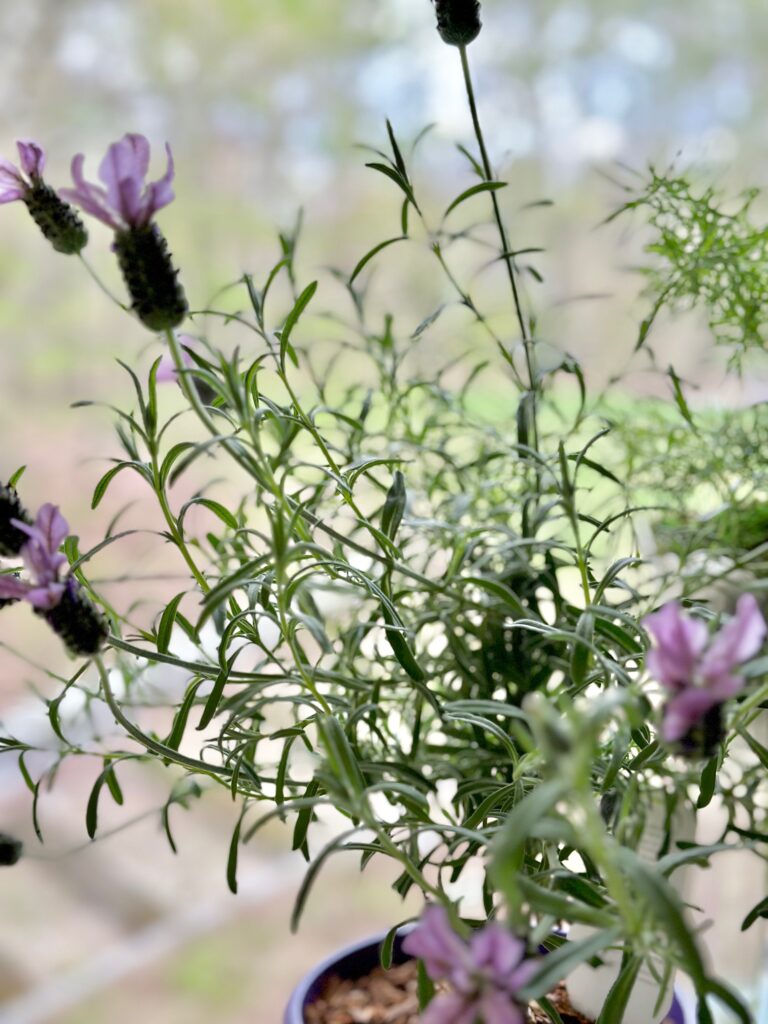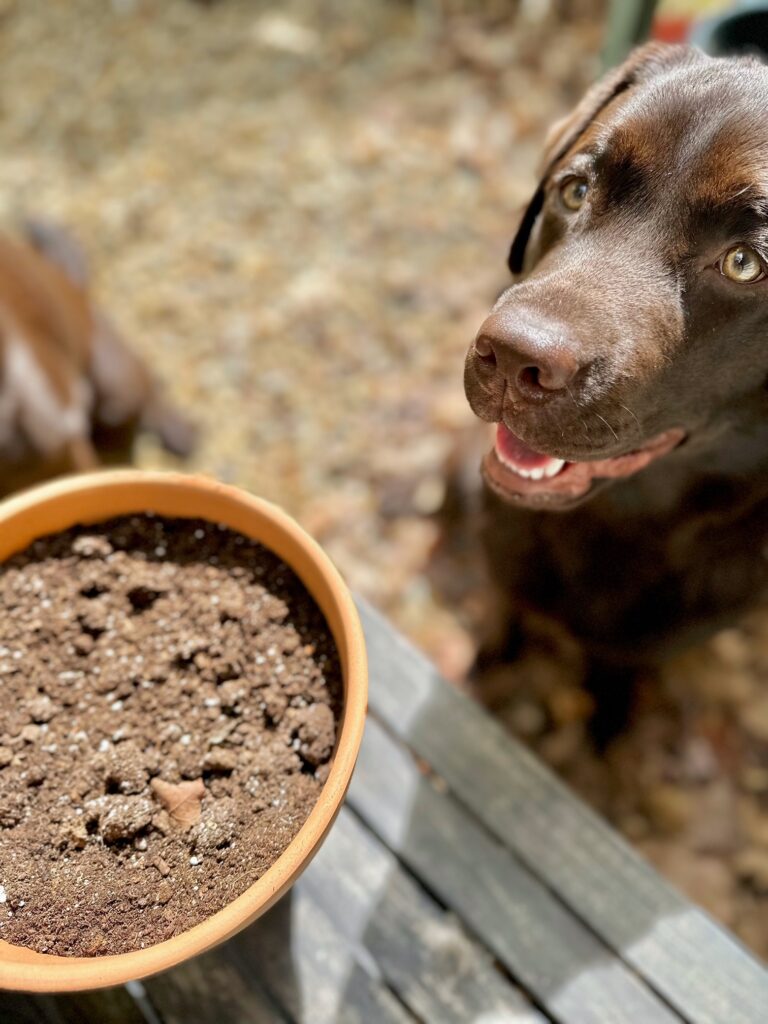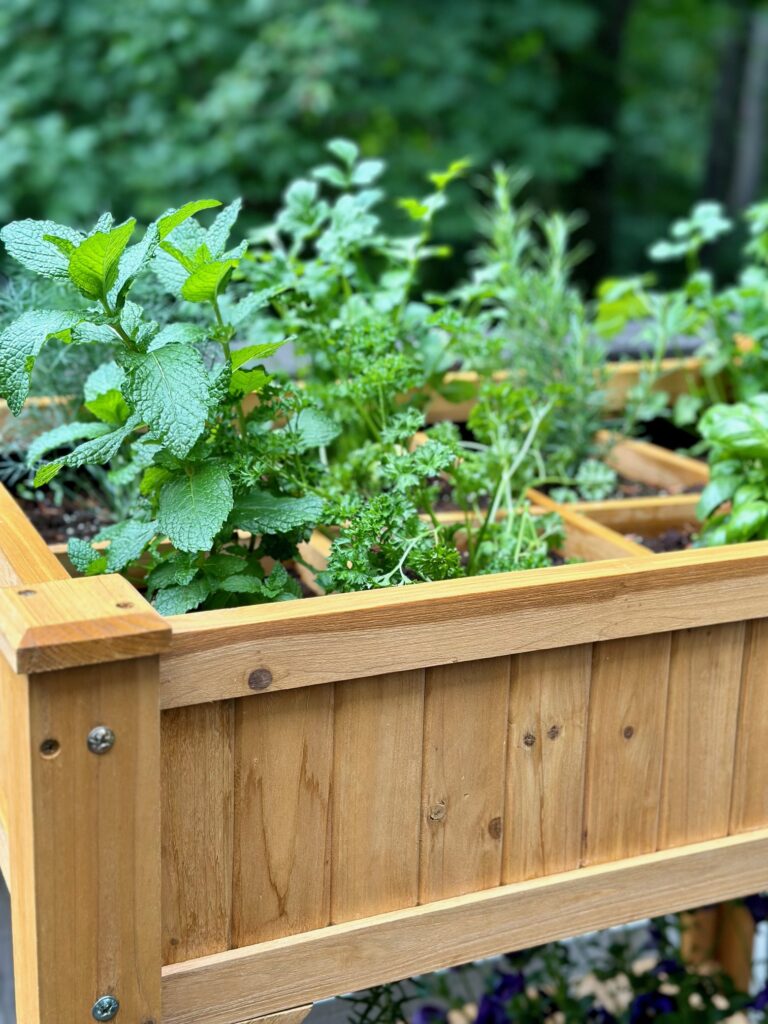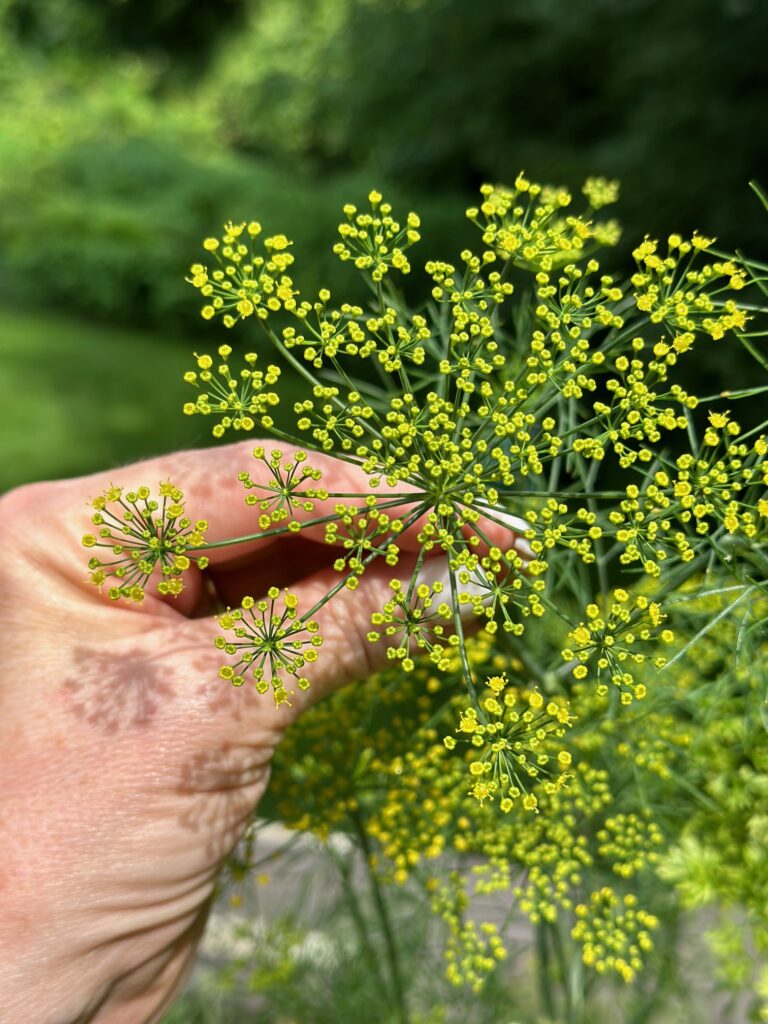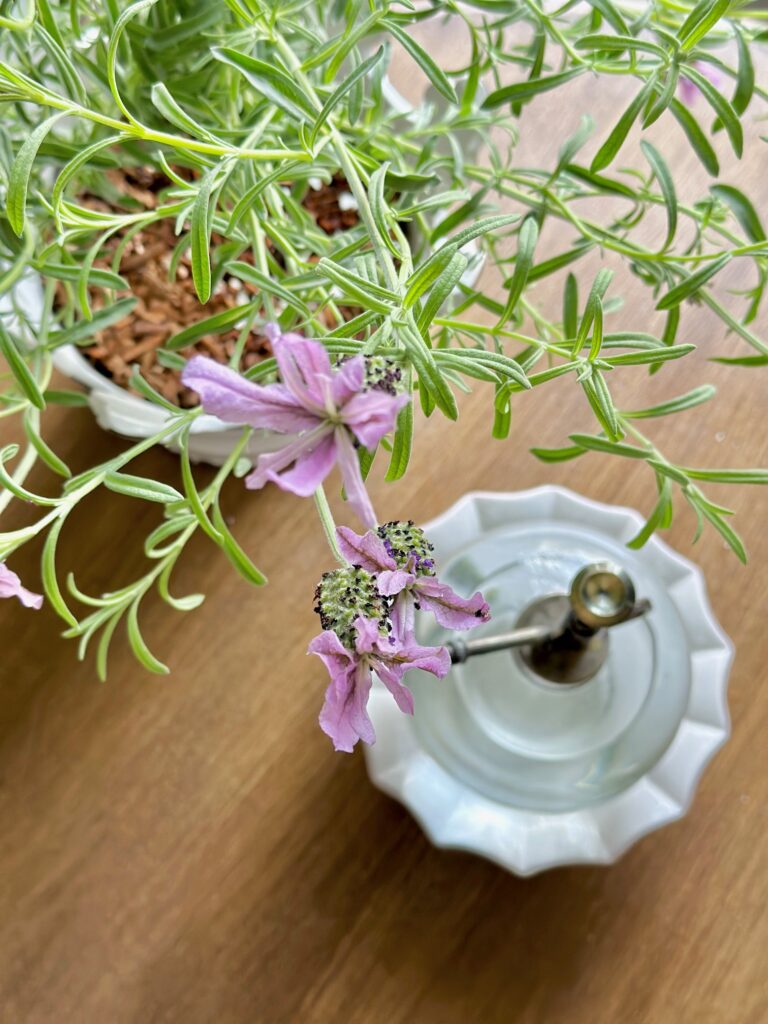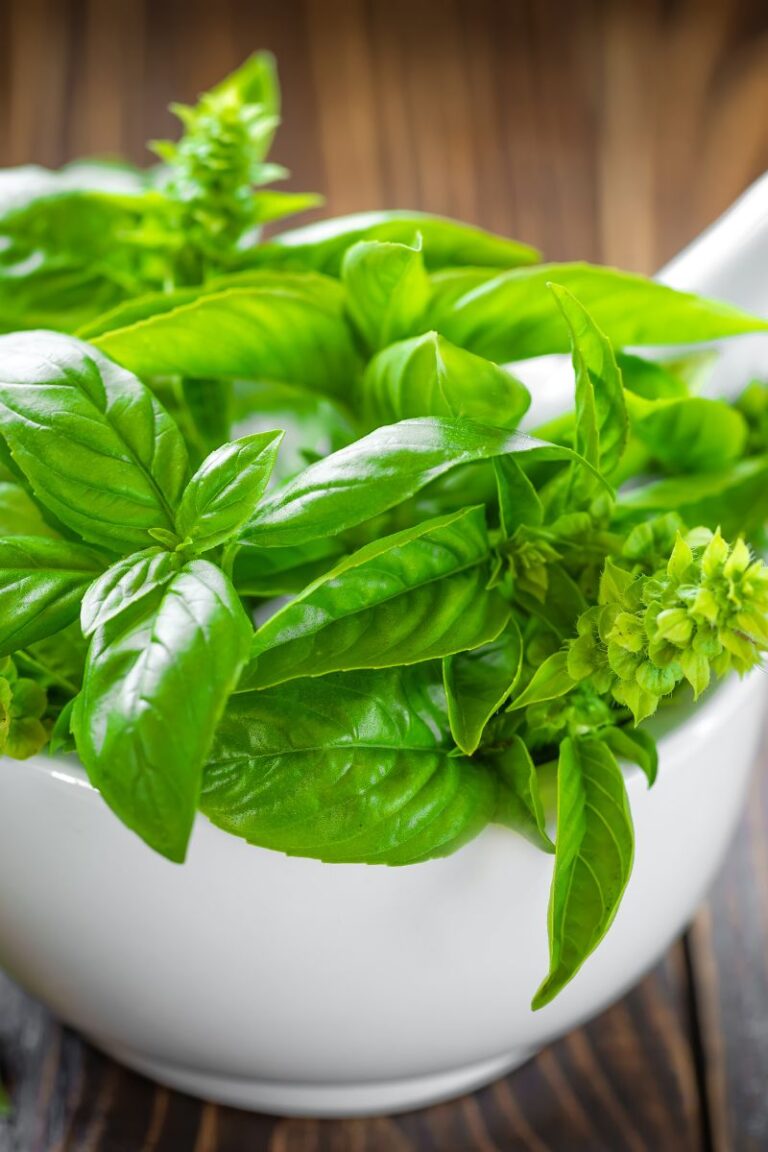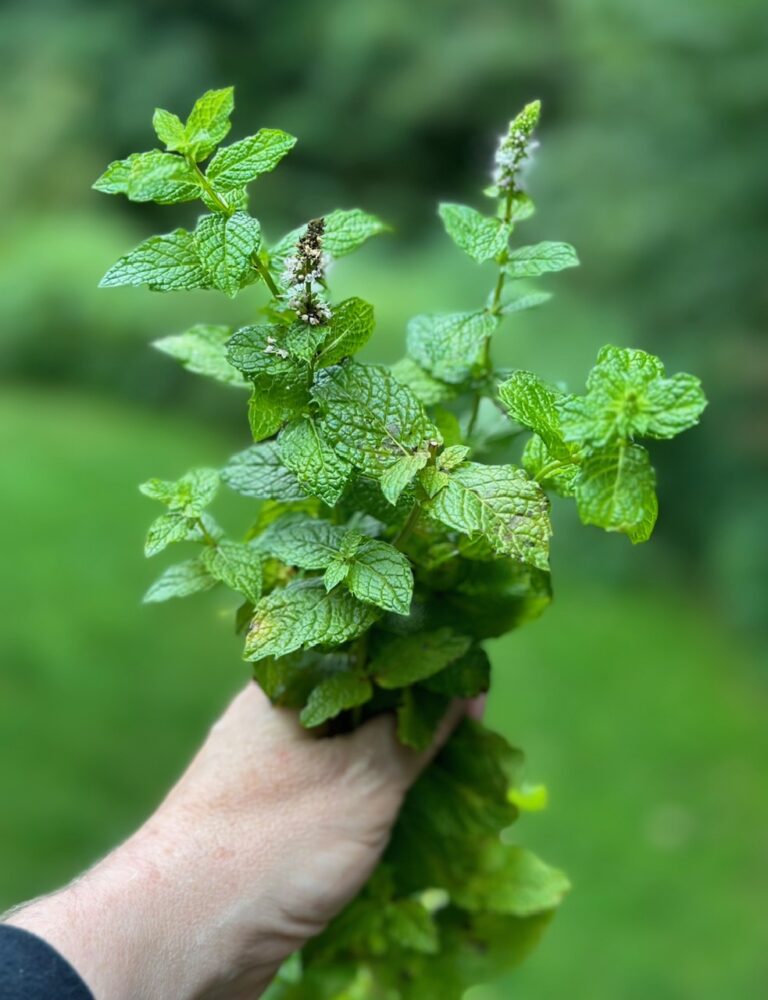Do Lavender Plants Like Coffee Grounds? Exploring the Benefits and Drawbacks
Who doesn’t love a sweet, herbaceous-smelling lavender plant in their home? But, let’s be real, taking care of indoor plants can be a bit of a hassle. One crucial step to keep them healthy is proper fertilization. Now, have you ever wondered if your morning cup of joe can be used to boost your indoor lavender plant’s growth? Well, in this latest blog post “Do Lavender Plants Like Coffee Grounds? Exploring the Benefits and Drawbacks,” we’ll spill the tea (or coffee) on whether using coffee grounds as a fertilizer is a good idea. Plus, we’ll share some other fantastic fertilizing options to keep your indoor lavender plant blooming all year round. Let’s dive in!
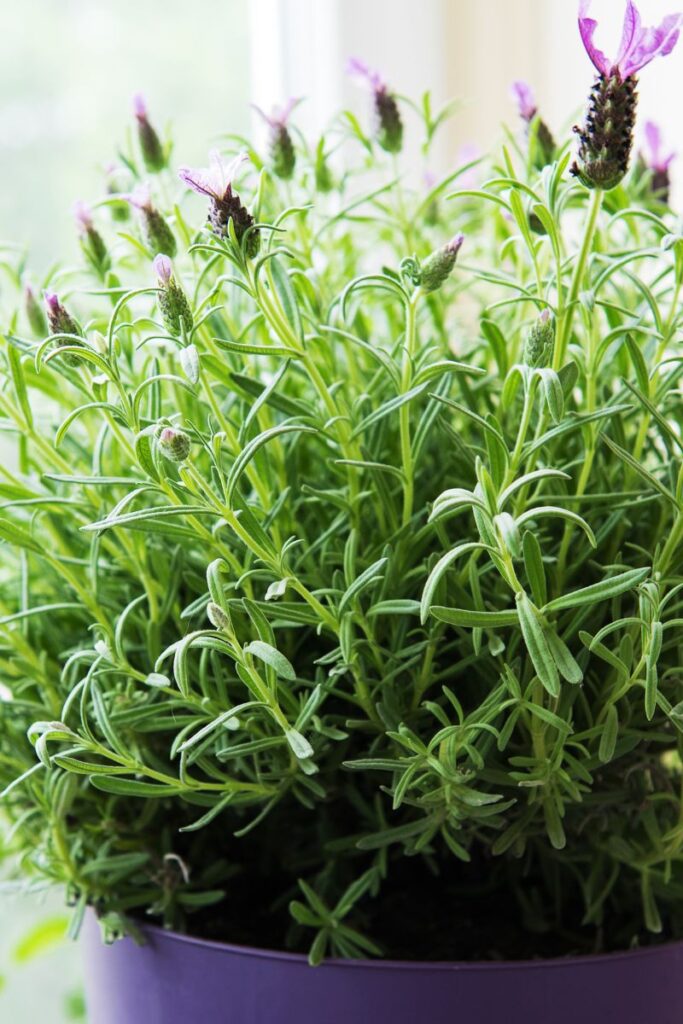
Content may contain affiliate links. When you shop the links, we receive a small commission at no cost to you. Thanks for supporting my small business.
pH Levels for Indoor Lavender Plants and Coffee Grounds as Soil Amendment
First, let’s discuss the pH levels of indoor lavender plants. Lavender plants, like Rosemary plants, are actually alkaline-loving plants, meaning they prefer soil with a pH between 6.5 and 8.0. While they can still grow in slightly acidic soil, a pH range of 6.4 to 6.8 is not ideal for lavender. Coffee grounds are often used as a soil amendment for acid-loving plants because they are a good source of nitrogen and have a high acid content.

Do Lavender Plants Like Coffee Grounds? It’s a Bit Controversial
While coffee grounds can be used as a soil amendment for some plants, it is important to note that the use of coffee grounds on lavender plants can be controversial. While some gardeners, like myself, report success using coffee grounds on their lavender plants, others have found that it can lead to negative effects, such as stunted growth and yellowing leaves. This may be due to the fact that lavender plants prefer alkaline soil, and coffee grounds can increase the acidity of the soil over time. While I find fresh coffee grounds can be beneficial for indoor lavender plants in small amounts, it is important to note that coffee is not a complete fertilizer. Lavender plants require a balanced mix of essential nutrients, including nitrogen, phosphorus, and potassium, in addition to proper soil pH. Overuse of coffee as a fertilizer can lead to imbalanced nutrient levels and even root rot in some cases.
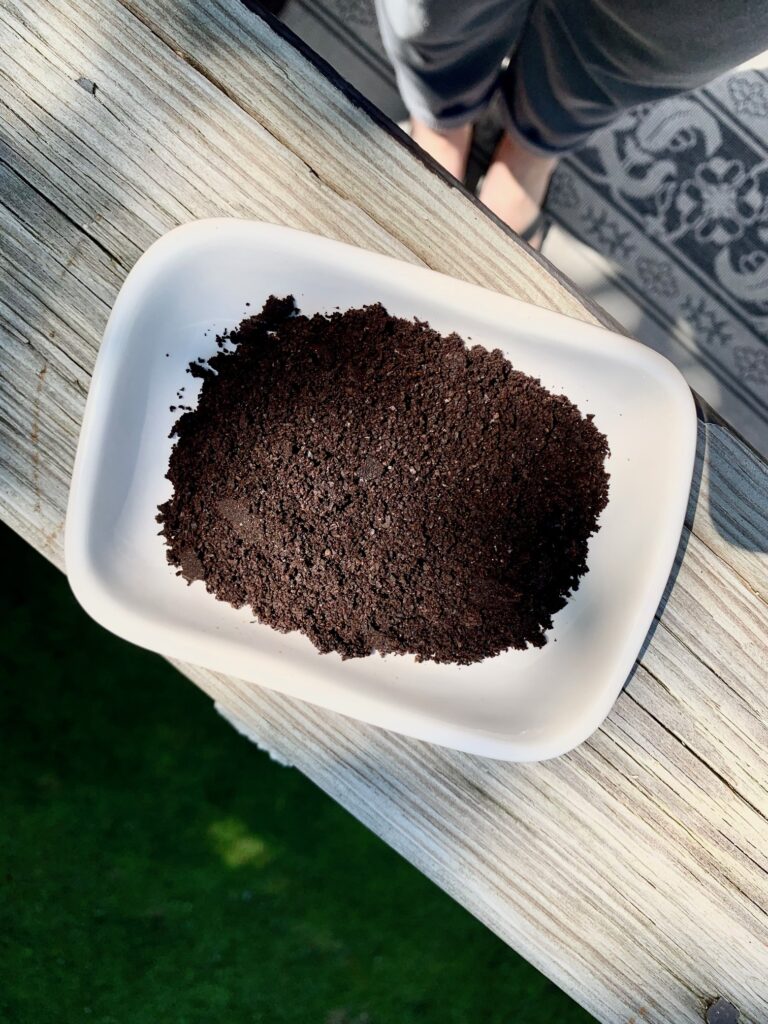
Some Better Fertilizing Options
So what are some better fertilizing options for indoor lavender plants? Organic fertilizers, such as composted manure, worm castings, and bone meal, are excellent choices because they provide a balanced mix of essential nutrients and improve soil structure. These organic materials can be added to the soil or used as a top dressing to provide a slow release of nutrients to the plant’s root zone.
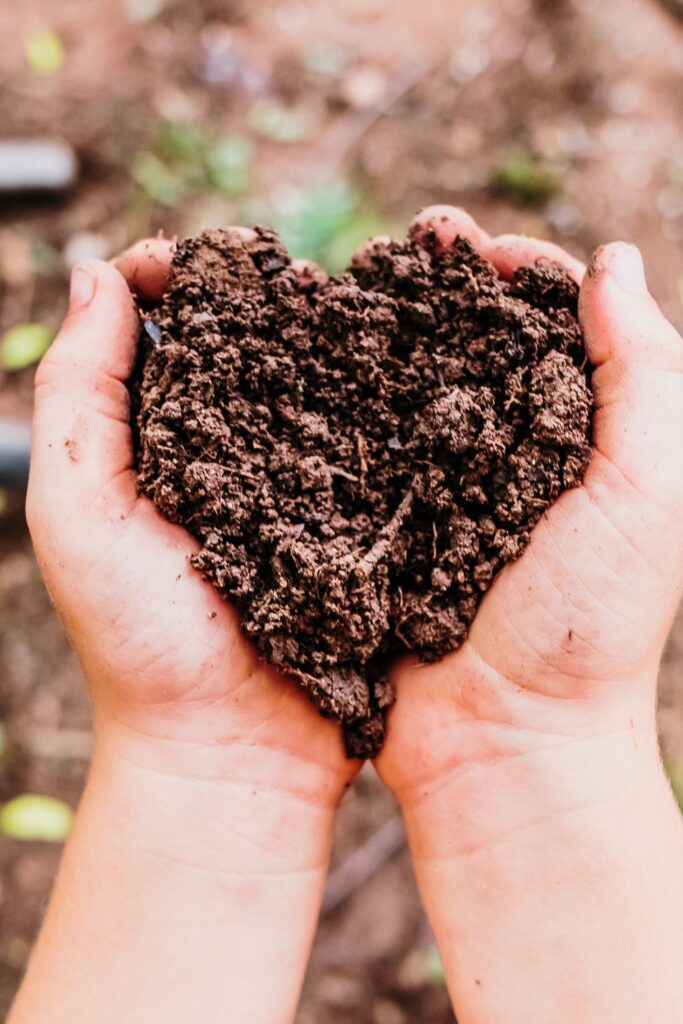
Commercial Fertilizer
Another option is to use a commercial fertilizer specifically formulated for lavender plants. These fertilizers contain a balanced mix of essential nutrients, including nitrogen, phosphorus, and potassium, and are designed to provide the best results for indoor lavender plant growth.
Homemade Fertilizer
Here’s a simple recipe for a homemade fertilizer that you can use for your lavender plants:
Ingredients:
- 1 gallon of water
- 1 tablespoon of Epsom salt
- 1 tablespoon of baking soda
- 1 tablespoon of fish emulsion
Instructions:
- Mix all ingredients together in a large bucket or watering can.
- Stir well to dissolve the ingredients.
- Apply the fertilizer to the soil around the base of your lavender plants, being careful not to get it on the foliage.
- Water your lavender plants as usual.
This fertilizer provides magnesium and sulfur from the Epsom salt, alkalizes the soil with baking soda, and supplies additional nutrients with the fish emulsion. It’s important to note that lavender plants do not require heavy fertilization, so use this homemade fertilizer sparingly, once every few months. Over-fertilizing can actually harm plants.
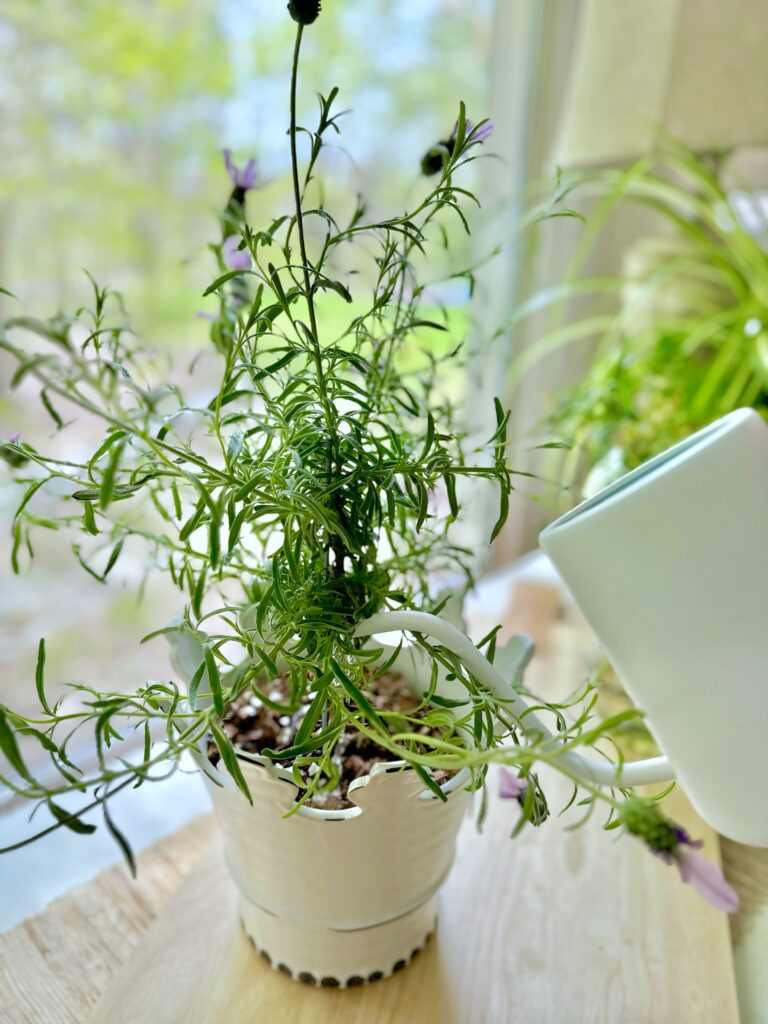
Did Someone Say Kitchen Scraps?
Lavender plants do not require a lot of nutrients, you can still use some kitchen scraps to provide them with additional nourishment. Here are a few examples of kitchen scraps that can benefit lavender plants:
- Coffee grounds: Used coffee grounds are an excellent source of nitrogen, which is essential for plant growth. Simply add a sprinkling of coffee grounds around the base of your lavender plants and mix them into the soil.
- Banana peels: Banana peels are rich in potassium, which can promote strong root growth and flowering. Chop up banana peels and bury them in the soil around the base of your lavender plants.
- Vegetable scraps: Vegetable scraps, such as carrot tops and lettuce leaves, can be used to make a homemade compost that can provide your lavender plants with additional nutrients. Simply layer the scraps with dry leaves and grass clippings in a compost bin and wait for it to decompose into rich compost.
- Eggshells: Crushed eggshells are a good source of calcium, which can help prevent blossom end rot in plants. Sprinkle crushed eggshells around the base of your lavender plants.
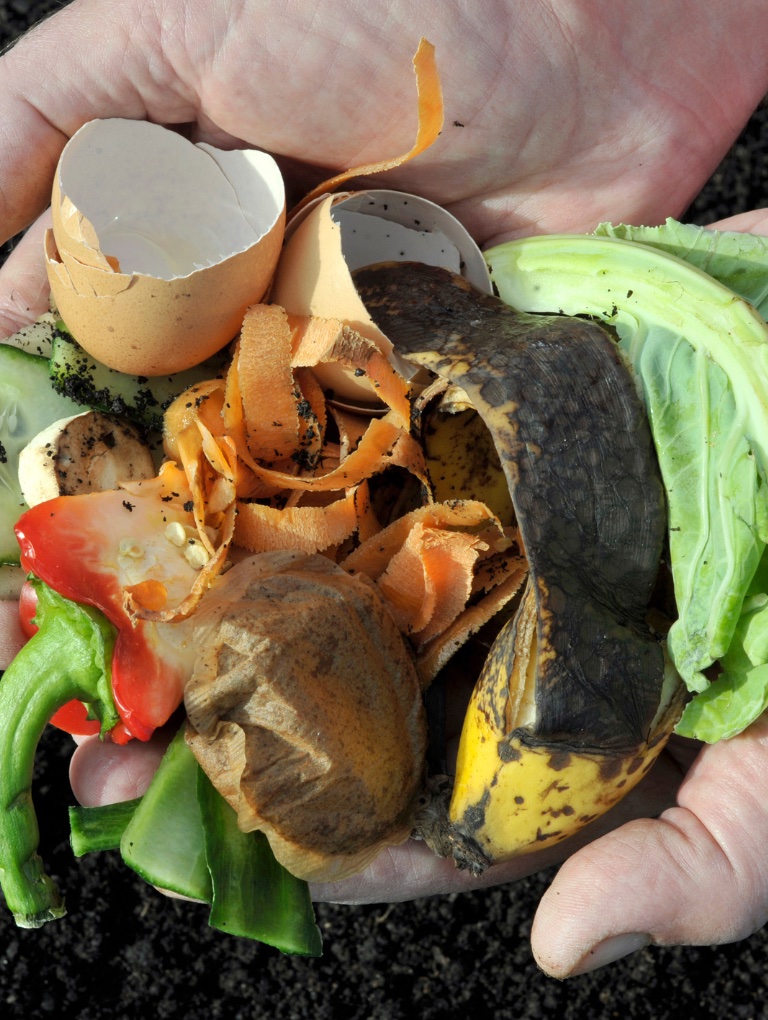
It’s important to note that kitchen scraps should not be the sole source of nutrients for your lavender plants, and they should be used in moderation to avoid over-fertilizing.
Soil and Watering Requirements for Indoor Lavender Plants
Before we get too carried away with fertilizer, let’s make sure our lavender babies have a solid foundation of well-drained soil and proper hydration! Proper watering and drainage are crucial to the growth of indoor lavender plants. Lavender plants require well-drained soil and do not tolerate soggy conditions. Good drainage prevents water from sitting around the roots, which can lead to root rot. To ensure good drainage, use a potting mix that is specifically formulated for indoor plants and has good drainage properties.

Coffee Grounds in Small Amounts Can be Beneficial
While coffee can be used as a fertilizer for indoor lavender plants in small amounts, it is not a complete fertilizer and should not be relied upon as the sole source of plant food. Better fertilizing options for indoor lavender plants include organic materials, such as composted manure and worm castings, or commercial fertilizers specifically formulated for lavender plants. Proper care, including proper watering and drainage, is also crucial for healthy indoor lavender plant growth.

Frequently Ask Questions About Fertilizing Lavender
The best time to fertilize indoor lavender plants is at the beginning of the growing season, which is typically in early spring. This will give your plants the necessary nutrients they need to grow healthy and strong.
Yes, you can use coffee grounds as a fertilizer for your indoor lavender plant, but it’s important to use them in moderation. Coffee grounds can be acidic, so they work best for plants that prefer alkaline potting soil, like lavender. Use a small amount of fresh grounds or sprinkle a thin layer of dried coffee grounds on top of the soil. Be sure to mix the coffee grounds into the soil to avoid direct contact with the plant’s roots. For more information on using coffee grounds for plants visit my Which Indoor Plants Like Coffee Grounds (and how I use my Keurig to make fertilizer post.
Compost made from organic materials like grass clippings, wood chips, and food waste is a great option for indoor lavender plants.
It’s best to fertilize your indoor lavender plant every 4-6 weeks during the growing season. Too much fertilizer can lead to excessive foliage growth and root rot, so it’s important to follow a regular fertilizing schedule and use a balanced plant fertilizer for healthy growth.
Lavender plants prefer slightly alkaline soil with a pH level between 6.5 and 8.0. You can test the pH of your soil using a soil test kit, which can be purchased at a garden center or online.
It’s best to use a fertilizer specifically formulated for indoor plants, as they have different nutritional requirements than garden plants. Garden plant fertilizers may contain higher levels of nitrogen, which can lead to excessive foliage growth and root rot in indoor plants.
Water your indoor lavender plant thoroughly after fertilizing, but be sure to allow the soil to dry out slightly before watering again. Overwatering can lead to root rot, so it’s important to maintain good drainage and not give too much water. For more information on proper watering visit my How Often to Water Lavender Indoors: A Comprehensive Guide post.
If your indoor lavender plant has pale or yellow leaves, stunted growth, or fewer blooms than usual, it may be a sign that it needs more fertilizer. However, be sure to rule out other factors like overwatering or insufficient sunlight before assuming that the plant needs more fertilizer.

So, can your morning brew give your indoor lavender plant the boost it needs to thrive? As it turns out, the answer is a bit complicated. While coffee grounds may provide some benefits, such as adding organic matter to nutrient-poor soil and repelling pests, they can also harm your plant if used in excess. Think of it like coffee for humans – a little bit is great, but too much can leave you jittery and anxious. So, if you want to give your lavender plant a good dose of nutrients, why not try some organic compost or compost tea? And if you’re a coffee lover, don’t worry – there are plenty of other ways to put those leftover coffee grounds to good use, from making cold brew to using them in DIY body scrubs. The bottom line? When it comes to fertilizing your lavender plants, it’s all about finding the right balance. So, grab a cup of joe (or a compost pile) and give your lavender plant the love it deserves.
I hope you enjoyed this, Do Lavender Plants Like Coffee Grounds? Exploring the Benefits and Drawbacks post, it is the third post on Lavender care so be sure to check out my others:
Post 1: How Often to Water Lavender Indoors: A Comprehensive Guide : Learn how to care for your indoor lavender plant in this comprehensive guide! Lavender is an excellent choice for indoor growing due to its low water requirements, but proper care is crucial. In addition to expert tips on watering, soil, lighting, temperature, and troubleshooting, discover the best lavender varieties for indoor growing. Plus, find out how to choose the right soil for your lavender plant, including how to increase alkalinity with items found around your home like eggshells and wood ash.
The Best Soil for Lavender: Tips for Creating the Perfect Mix: In this post Cooper has you covered on the importance of good soil for indoor lavender plants. Lavender plants require well-draining soil with good air circulation and can be prone to root rot if the soil is too wet. The surrounding soil’s pH level should also be taken into account since lavender prefers alkaline soil with a pH level between 6.5 and 8.0. The post breaks down alkaline vs. acidic soil pH levels and explains the importance of avoiding poor soil for plant growth. It also provides steps to make a homemade lavender soil mix, including testing the soil pH, and discusses how to amend the soil with lime or sulfur to create a favorable growing environment for lavender plants.
Thanks for visiting today for Do Lavender Plants Like Coffee Grounds? Exploring the Benefits and Drawbacks, I hope it was helpful please let me know in the comments. If you would like to explore how to fertilize other herb plants please visit my What You Need to Know About Fertilizing Herbs: Nurturing Nature’s Bounty post. I’m so glad you stopped by today!
Keep creating friends!


